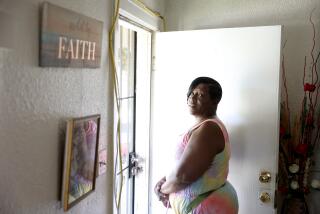Editorial: The old and maddening story about child protection in L.A. County
At first blush, the most recent state audit of the Los Angeles County Department of Children and Family Services seems maddeningly familiar. It cites failures in systems that are meant to ensure that children are protected from abuse and neglect. Reports on risky conditions in children’s homes are late and incomplete. When children are taken from their parents and sent to live with relatives, background checks of those relatives and inspections of their homes are spotty. Even assessments designed to measure the well-being of children in the department’s care fall short of standards.
Previous critical state audits, and the high-profile deaths of 8-year-old Gabriel Fernandez in 2013 and 10-year-old Anthony Avalos last year, moved the Board of Supervisors to increase the department’s budget and hire more social workers. Four child welfare workers are being criminally prosecuted for their alleged failures in Gabriel’s case. A blue-ribbon commission recommended systemic changes in child protection and oversight.
The county has certainly been on notice about serious problems in its child welfare system.
So the audit’s findings are a cause for concern. And yet, a closer examination reveals they are not necessarily reason for outrage.
For example, take the finding that the ratio of social workers to supervisors is too high and in fact increased from 5.5, on average, to 6.3 during the year that the audit examined. That means too many reports for each supervisor to properly review and complete on a timely basis.
If there are more front-line workers, there must also be more supervisors.
Not noted in the audit is the reason for that growing ratio. In the wake of the Gabriel Fernandez tragedy, the commission’s recommendations and a labor action by rank-and-file department employees, the county finally stepped up its hiring and training of front-line social workers. That means lower caseloads per worker, which is a very positive development. More manageable caseloads means more care and attention for each child who is referred to the department because of suspected abuse or neglect.
If there are more front-line workers, though, there must also be more supervisors. Supervisor caseloads got especially out of whack in the Antelope Valley, where both Gabriel and Anthony died. To DCFS Director Bobby Cagle’s credit, the department addressed that region’s problem, but it must now do the same for the rest of the county.
The audit cited shortcomings in background checks of grandparents and others who step in to take care of children who must temporarily be removed from their homes. Those checks are essential, because the department tries to place kids with relatives rather than foster care whenever possible. One study after another shows far better outcomes for children who are sent for a time to live with their adult relatives than those sent to be with strangers in foster care, no matter how caring and responsible the foster parents are; but the department must be assured that the relatives’ homes are safe. Social workers must be confident they are not sending children to live in risky conditions or with dangerous relatives.
Enter the Fray: First takes on the news of the minute »
It may well be that state law is too restrictive by disqualifying grandparents, aunts and uncles with (for example) a marijuana arrest in the past. But that’s no excuse for not running a background check.
The audit also noted that the department too often fails to close investigations into suspected abuse or neglect within the state-required 30 days.
This is a distressingly familiar concern, having been also noted in a 2012 state audit. At that time, the department explained that it allowed itself 60 days rather than rush to a conclusion and possibly miss something important. Lower caseloads and additional resources should now allow timelier investigations.
Many of the other problems reported in the audit are of a similar nature. They indicate continuing or emerging gaps in the county’s effort to improve its service. These are troubling, even though the problems may not be as grave as they might seem on the surface. To that extent, the report is valuable and ought to be taken seriously by the department — and by the Board of Supervisors, which bears the ultimate responsibility for adequately funding and overseeing child welfare in L.A. County.
Follow the Opinion section on Twitter @latimesopinion and Facebook
More to Read
A cure for the common opinion
Get thought-provoking perspectives with our weekly newsletter.
You may occasionally receive promotional content from the Los Angeles Times.










